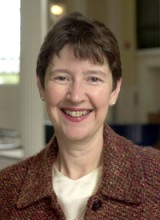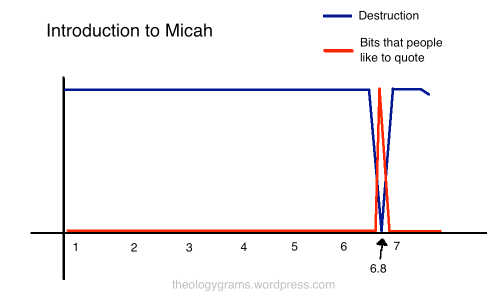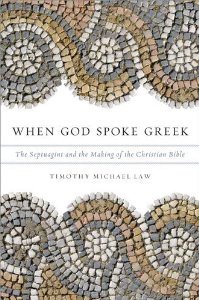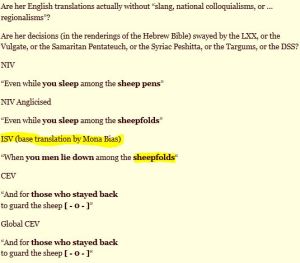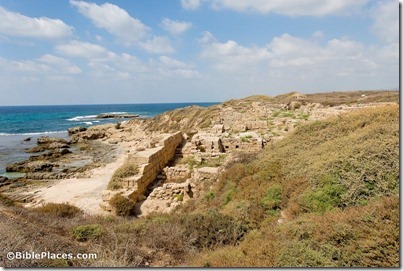By Pam Nath. Cross-posted from The Mennonite 
Image by Ricardo Levins Morales
If “your” elected officials are middle-aged, white people who smile at you a lot, it may be time to relocate. Being a “minority” - even a sizable minority - in a city with white officials has become more of a hazard than at any time in the last twenty years. American justice is divvied out across a great racial divide. We don’t believe that Black elected officials are - on their own - a cure for our problems. However, we do have a greater ability to pressure them. [Living in a white community], you may have more government services, but those services include more policing by officers who think your child is dangerous. If you move, the idea that your child is not as easily singled out can give some comfort.
–Kamau Franklin, New Rules for the Black Community after the Zimmerman Verdict
“We know that the whole creation has been groaning in labor pains until now, and not only the creation, but we ourselves, who have the first fruits of the Spirit groan inwardly…Likewise the Spirit helps us in our weakness; for we do not know how to pray as we ought, but that very Spirit intercedes with sighs too deep for words.” Romans 8: 22–23a, 26
Because I know that Kamau Franklin’s words in the quote above are likely to be disturbing to many people who read this column, and some may be tempted to dismiss them as the words of a hateful demagogue, I want to begin by saying that I have met Kamau on several occasions, and once participated in a two-day strategic planning meeting with him. He has never been anything but kind and friendly to me, a white woman, and in fact, has always struck me as a particularly gentle and thoughtful person. If his words seem jarring and painful to you, my plea to you is to struggle to hear them nonetheless. I think doing so is critically important to the life of our church because I am sure there are other Mennonites who are reading this column who totally get where Kamau is coming from, and in fact are feeling and wondering similar things as he. We are a divided church and sadly, the dividing walls between us (Ephesians 2:14), rather than being broken down by a free movement of the Spirit, too often are growing ever thicker.
The Monday after the verdict, Laura Brennemanwrote about the disconnect that she observed in an entry on the Mennonite Church US blog:
I am in mourning not only because Trayvon Martin is dead, not only because the state of Florida has deemed it acceptable for a man to use deadly force against an unarmed African American 17-year-old male, and not only because the dysfunction of my nation and my Christian faith tradition plays itself out painfully primarily in the bodies of black people, brown people, women, and LGBTQ people.
I am also falling into deeper and deeper despair as I observe fewer Facebook posts of outrage from my white friends than my black friends. The message that is reinforced to me is that white people do not have to even pause to consider how African Americans have been poignantly reminded that they are not safe in this country. I cannot tolerate this and I cannot be silent.
Our divided and broken church
The divide was not just displayed via people’s posts on Facebook. Think about churches the Sunday after the verdict was announced. Was the verdict mentioned at all in your church service? Was it the central focus? I’m guessing answers to these questions would vary partly along race lines, although of course there would be individual exceptions.
This disconnect has very real consequences for people. Listen with an open heart to the reflections of Enuma Okoro about the silence in the church she attended on Sunday:
On Sunday I went to church.
I won’t lie; it’s been a month of Sundays since I went to church. For me, church so often feels like a game I just can’t seem to get right. But I went to church yesterday because I needed to hear someone say something coherent and wise about how, as a Christian, I should remain hopeful about the world. How I should remain active in the pursuit of justice, even when attaining it this side of heaven seems so very far-fetched. And to be honest, I went to church because I needed to hear some blessed person remind me that no matter what goes on in the justice system or in congress rooms or in police offices, there are still places in this country apart from my family and friends where people who look like me count.
Really, I suppose I went to church because there’s something in me that still prays the church can meet me in places where the world can’t.
So, it’s hard to express my disappointment when the pastor…did not say one word about Trayvon Martin or George Zimmerman or the trial even. Not one word….
I am continually learning that not every church views the issues of racism and injustice as significant and applicable enough to the life of their particular congregations to speak about it from the pulpit. And I wasn’t the only one with this experience. I asked on Facebook and Twitter and more people than not said they heard nothing from the pulpit. I know there are countless churches who did offer a much needed word and practical counsel on what could be done next. But for every person who said their church did address these issues, there were too many who said they heard nothing.
I also have experienced too many times when a significant injustice in the world was met with deafening silence in church. I’ve often had to look for “church” in other places. Last Saturday night, when the jury in the Zimmerman trial returned its not guilty verdict, my Facebook feed filled with cries of agony, rage, and grief. Friends posted songs of lament and comfort, poured out the confusion and questions in their hearts, observed that the Zimmerman verdict was neither surprising nor unusual since similar injustices happen every day in this country, posted and liked and reposted pictures expressing feelings of rage and grief and vulnerability, discussed what could be done now. It felt like a community (albeit connected electronically) sitting shiva and “keriah writ large.” I wish this is what Enuma Okoro would have experienced at the church that she attended. There are so many of us longing for this sort of church.
That Saturday night and the following day, Facebook posts from other friends of mine, friends who live in majority white communities and who were posting pictures of their kids or their vacations, funny youtube videos, baseball games, etc., talking about the stuff of their lives as if nothing significant had happened, nothing had changed – were jarring to me. A friend here in New Orleans commented “How are all these people acting normal?” That’s what I was feeling too; it was one of those moments when something overwhelmingly tragic had happened and it seemed like life just couldn’t—or shouldn’t–carry on as normal.
I don’t think pastors or church members or friends of mine who aren’t sitting shiva over the Zimmerman verdict are “racist” or uncaring people. Some may even have paid some attention to the case and think the decision was dismal and unjust, but its just one more piece of news in a world where we are inundated with bad news, not a core personal trauma that one needs to sit shiva over. As I see it, the divides evident on Facebook, in our pulpits on Sunday, and in our opinions about the verdict (both its justness and its importance) are not divides between “good” and “bad,” people, but instead reflect the continuing segregation in our lives and in our communities and in our world. We are a divided church. We are a broken church.
White spaces are not safe
If the problem is that we are divided, then aren’t Kamau’s words calling for more separation part of the problem? Aren’t they going to create even more brokenness? I think that in order to understand Kamau’s words, we white people need to know more about how black people and many other marginalized people, immigrants, indigenous persons, Latinos, Asians, etc. experience mixed race spaces.1
Mixed race spaces are dangerous for black people and other marginalized people. White people have trouble imagining this is true because it doesn’t fit our self-image—we see ourselves as nice people. But these spaces are dangerous due to the threat of physical violence, they are dangerous due to the constant and chronic racial microaggressions that people of color are subject to, and they are dangerous to the psyche because these spaces too often demand that people of color mute or silence their voices as the price for peaceful coexistence.
Kamau is writing to Black people, and he is not editing himself for white people’s ears; white people are being given the opportunity to listen in. Sadly, more often than not, we white people are not good at listening to people who say the things that Enuma and Kamau and many others try to tell us. If our typical response to is to get defensive, to argue with the person’s experience, to tell them that they are being too dramatic, too angry, too sensitive, too ______, is it surprising if many Black people learn that its not worth their effort telling us all of what they think?
Under this arrangement, integration (like everything else in our society) actually serves white people more than it does Black people. It assuages white people’s conscience, it allows for just enough diversity to be “interesting,” while still protecting the comfort of white people who otherwise would find it hard to hear the things that Black people and people from other marginalized groups have to say to us. Even if they are committed to intentional antiracism (and certainly if they are not), mixed race spaces always come at a cost for people of color. True wholeness doesn’t come with a smattering of faces of color who don’t say things too different from the things that we are already used to hearing.
So what is the hope for healing in this dismal and deep racial quagmire we are in? I’m not close to having all the answers, but the first step seems obvious to me: white people need to be doing the work of racial justice all the time, not just when Black people or people from other marginalized racial/ethnic groups are present and not just when racial conflict flares up.
Doing the work of racial justice for ourselves
About a year ago, I had the blessing of participating in a mass said by Rev. Janice Sevre-Duszynska, a woman Priest. She began the mass by talking about how WomenPriests are calling for changes in the Church that include but go beyond women being ordained. She led us in a beautiful mass with echoes of the traditional Catholic mass but much less hierarchical, more participatory, inclusive and welcoming. I was surprised how meaningful it was for me, a person raised as but no longer Catholic. At one point in the service, we listened to a beautiful song that invited us to look to our left and to our right and behold the face of God. We were all-white group except for one Black man, a friend of mine, who had come to the service in solidarity, he said, to offer support to me and a number of others in the group who had stood with him fighting for racial justice. I thought about what it would have meant if those connections hadn’t been built and if he hadn’t come. As we each looked to our left and our right, beholding the faces of God, we wouldn’t have seen any faces other than white ones.
What does it mean for us white people that we live in a world where it is legal for an unarmed 17 year old to be shot and killed by someone on neighborhood watch; where our legal system tolerates horrible racial disparities in detainment (stop & frisk), arrest, conviction, and sentencing; where racial disparities in education, wages, unemployment, and health outcomes are overlooked and justified, so much so that we are gutting laws like Affirmative Action and the Voting Rights Act?? What does being privileged by and thus colluding with this unjust evil system do to our psyches? What does it do to our souls? And how much long can this sort of injustice go on before we learn what James Baldwin was talking about when he wrote “God gave Noah the rainbow sign. No more water, fire next time!”
The racial injustice in our word dehumanizes and hurts all of us, although it hurts Black people and white people in different ways, and it offers white people concrete and immediate privileges that often seem to offset the more abstract and long-term devastation that it is also creating in us and in our communities. We white people need to long for a different more racially just world for ourselves, not just for people of color. If we want to look to our left and our right in churches and see all sorts of different faces, then we have a lot of work to do.
What can I do?
If you are a white person and you aren’t sure where to start, one resource you might find helpful is the toolkit put out by Showing Up for Racial Justice, a national network of groups and individuals organizing white people for racial justice. I’ve included below some supplemental readings in addition to those resources listed in the toolkit , including some books, because organizing a group to read a book together, a chapter at a time, is a good way to build community in a way which is needed to do the hard work ahead of us. (I especially love the idea of white study groups watching together the inspiring documentary Southern Patriot about the life of Anne Braden, a white woman from the South who committed her life to the work of racial justice.)
I continue to have hope for change to come. I feel obligated to work at continuing to hope, given the example that Black people and other fighters for justice have provided, and I work to hold tightly the promise voiced by Martin Luther King, Jr. that though the arc of the universe may be long, it bends toward justice. Quoting James Baldwin again,
“If we- and now I mean the relatively conscious whites and the relatively conscious blacks, who must, like lovers, insist on, or create, the consciousness of the others- do not falter in our duty now, we may be able, handful that we are, to end the racial nightmare…and change the history of the world”
Pam Nath works as a Community Organizer for Mennonite Central Committee–Central States. She lives and works in New Orleans. She is part of a worship community that meets at Hope House, a community center in New Orleans. She enjoys biking, being in and around water, trees, photography, reading, potlucks, and watching and discussing movies with friends. She taught for 10 years as a Professor of Psychology at Bluffton University.
Articles:
Books:
- Michelle Alexander, The New Jim Crow: Mass Incarceration in the Age of Colorblindness
- Ewuare Osayande, Ed., Stand Our Ground: Poems for Trayvon Martin & Marissa Alexander Note: all proceeds from the purchase of this book are being donated to The Justice for Trayvon Martin Foundation and the Legal Defense Fund for Marissa Alexander
- James Baldwin, The Fire Next Time
- Becky Thomas, A Promise & A Way of Life: White Antiracism Activism
- Howard Zinn, A People’s History of the United States
Films:
1I am speaking here out of my own experience; living and working in a majority Black city. Most, though not all, of my closest relationships with people from marginalized racial/ethnic groups have been with Black people. Also, I use the term “Black people” because it is what most of the people I work with prefer. I know that different people prefer different terms.

